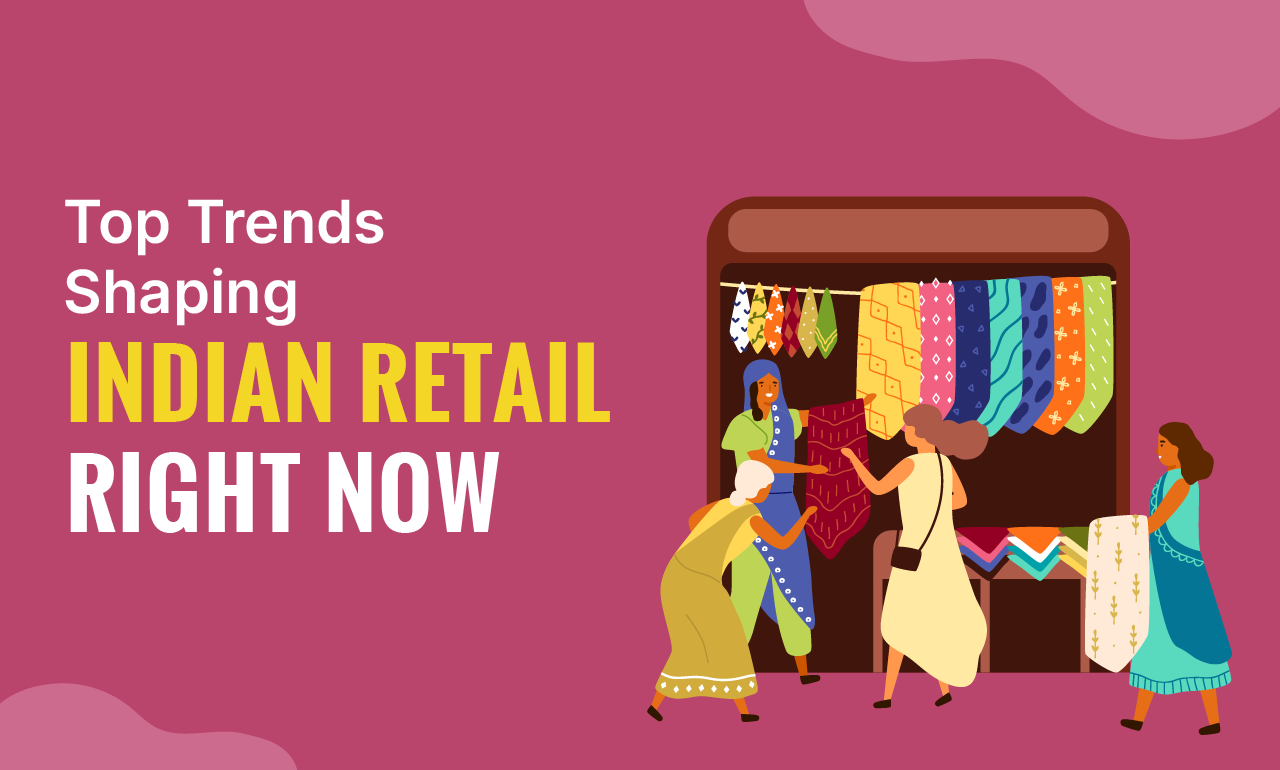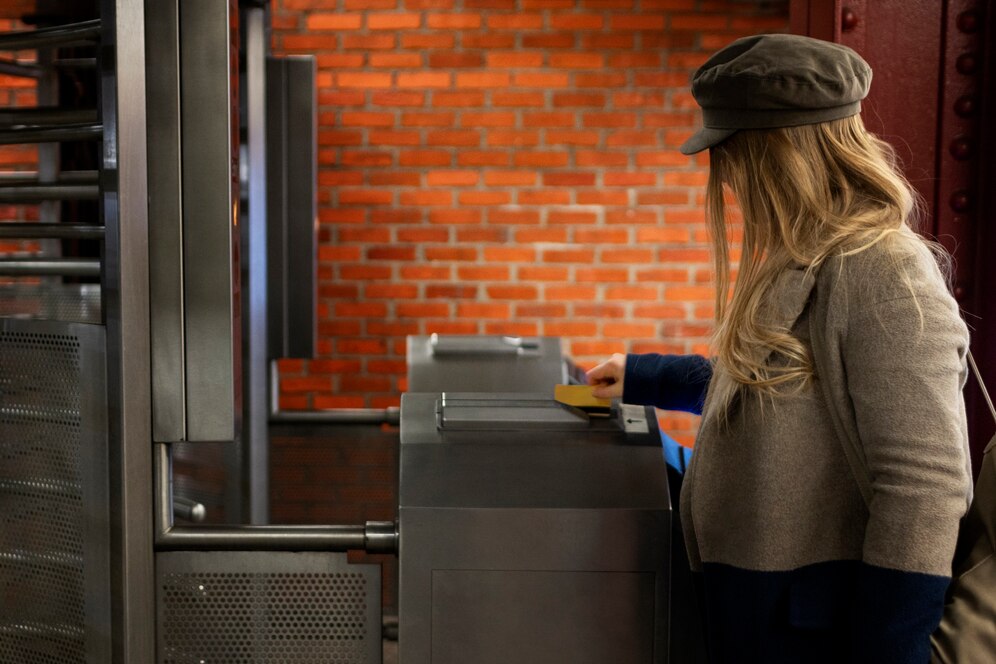The retail sector is all about change and the COVID-19 pandemic is a good example of how a crisis has inspired innovation. It has led to a sudden rise in digitalization for online sales across retail.
With changing consumer shopping habits, it is increasingly important for retailers to understand customers. Retail has moved from local chai shops across the country to kirana stores, modern trade, and online shopping.
Rising sales and profits today require focusing on excellent buying experiences for customers. This includes establishing a physical presence for online businesses through brick-and-mortar storefronts as well as supplying at wholesale and department stores.
Read on to learn the key takeaways for retailers looking to thrive in 2024 and beyond.
Top 11 Retail Trends in India
1. Voice Commerce
The lines between the virtual and the real world are blurring. Emerging technology includes speech recognition and other intelligent gadgets.
In 2024, Natural Language Processing (NLP) and Artificial Intelligence (AI) will reach new heights of performance. The speech recognition of digital assistants like Google Assistant, Alexa, and Siri is constantly improving. Voice assistance aids for customer service skills in the retail sector have vastly improved.
2. Artificial intelligence is essential for the development of more intelligent services
There is an opportunity for retailers to anchor their existing data in AI-powered offerings. In a world where consumers anticipate individualized experiences, recommendation systems are becoming crucial to keeping up with customer expectations.
Self-checkout is a new level of sophistication in retail because of progress in artificial intelligence, Machine Vision (MV), and the Internet of Things (IoT). Using state-of-the-art sensor networks, businesses can now fully automate their customers’ shopping process. This makes shopping less time-consuming and easier for consumers.
With the help of machine vision, stores can monitor the items consumers are adding to their carts and charge them instantly. Instead of waiting in line to pay, customers can simply walk out of the store.
3. The elimination of the middleman in subscription models
Companies are increasingly bypassing liaisons and casting meaningful bonds directly with consumers. This also provides them with more information on their customers.
Retailers should pay close attention to this development. Companies, however, must balance sales through traditional retail outlets and sales that are developed in-house.
4. Retail stores are looking into autonomous delivery and fulfillment systems
Many stores are investigating options for automating their distribution processes. For example, stores can build highly automated warehouses where robots and humans work side by side to assemble customers’ orders.
On the delivery side, innovations like driverless trucks and ships are under discussion. In the future, retailers can anticipate a rise in the use of fully automated processes. Robots are also being considered for use in retail for customer service.
5. Transparency in the supply chain is becoming increasingly crucial
Companies may utilize the Internet of Things (IoT) devices and sensors to keep track of their supply chain and gain a deeper understanding of demand. This will also help them to predict consumers’ wants and desires. As a result, more and more businesses are adopting blockchain technology to increase visibility throughout their supply chains.
6. People are starting to pay more attention to the brands they buy from
People are increasingly conscious of their social responsibility. They are aware that the effects their buying choices have on the natural world and the long-term success of the business.
In the future, carbon labels, food-mile labels, and source information are a few examples of information that will become common on product labels. Retailers should plan how they will pack and store products. They should be prepared to reply to customer queries regarding the environmental impact of the goods they sell.
7. Integrating the Best of Both Worlds: Online and Offline Shopping
Many traditional shops now provide additional shopping options such as BOPIS (buy online, pick up in-store), same-day delivery, and online shipping in addition to their traditional in-store inventory. As a result, businesses have to develop POS systems to add the different methods used by customers to place orders.
Systems that manage online and in-store purchases are only part of the solution. Retailers need a streamlined system that communicates with other technology devices. When designing the next generation of pos billing systems for retail enterprises, software developers have the challenge of integrating online and offline payments, inventory, and promotions across all physical stores and online sites.
8. Multiple methods of Payment
The ability to accept various digital payment methods improves the customer service experience. Online and offline shoppers can make payments through Buy Now, Pay Later, QR codes, Google Pay, Apple Pay, and even cryptocurrency. It is a win-win situation when retailers can handle the financials of their online and physical businesses with the help of fintech services.
9. Indoor Positioning: An Efficient Means of Facilitating Store Navigation
A growing number of people are looking to indoor positioning systems (IPS) to assist in getting around buildings where regular GPS doesn’t work. However, this technology can be used in various contexts beyond what was initially conceived.
At first glance, indoor navigation could be really useful for getting around. This is a good tool to use at malls, offices, airports, and hospitals. IPS systems can do a lot more other than guide customers in stores. It’s helpful to know where customers are in the store in order to serve them better with recommendations, monitor customer traffic, and keep track of moving inventory.
10. Augmented Reality’s Game-Changing Impact on Business and Its Customers
For many years, augmented reality has played a significant role in retail. There’s no denying that companies are giving customers richer, more unified digital experiences. This opens up numerous possibilities for businesses to interact with their target customers in novel and enthralling ways.
Virtual try-on tools, augmented-reality interior navigation, and other programs can bring about such engaging experiences. This important innovation helps consumers feel more at ease making purchases in physical stores and online.
Try-before-you-buy applications are the most helpful when using augmented reality for online shoppers.
11. Loyalty Programs
Consumer preferences have shifted significantly over the past few years. Therefore, retailers need to establish a firm footing to keep track of the changing consumer reality. Providing discounts that satisfy customers’ rational need for value while also catering to their emotional needs through loyalty programs is a wonderful way for businesses to win their patronage and retain them. It’s undeniable that a successful store loyalty program can serve as a decisive differentiator, making a company more successful than ever before.
12. Handle Inventory
In 2024, retail will be fueled by computers and massive databases. However, many inefficiencies have arisen due to system overload and the complexity of retail management. Some stock-keeping units (SKUs) in a retail establishment may have incorrect quantities shown in the system. This has a backlash in the reliability of product location data. Resolving these glitches will result in saving both money and time for businesses.
There are several ways in which AI can improve the efficiency with which we manage these stocks. By analyzing customer spending habits, AI systems can foresee which products are likely to move off the shelf and when. As a result, the system can decide that some areas need more attention than others when it comes to manual auditing. While it may be daunting to audit the entire business, focusing on problem areas is a more efficient use of time and resources.
This is where QueueBuster (QB) has been busting the trend. Its real-time inventory management system can streamline operations across multiple locations, receive instant alerts, create purchase orders and invoices, as well as stock requisitions. Interestingly, QB also provides a recipe management system for restaurants to track consumption and reduce food wastage.
Conclusion
Retailers who quickly adapt to changing market conditions will ultimately succeed. Businesses in today’s increasingly digital world will recall the importance of client interaction and communication. This can be done by providing special experiences online or in person.
With the help of POS systems and demand forecasting technologies accessible in 2024, inventory management will be simpler. These issues can be overcome with the help of well-defined objectives and strategies.
Businesses that fail to adapt to shifting consumer tastes, emerging technology, and revised supply networks will be swept aside by the digital revolution and the resulting data-driven culture. After all, customers expect stores and retailers to provide an enjoyable, convenient, and worthwhile shopping experience.


